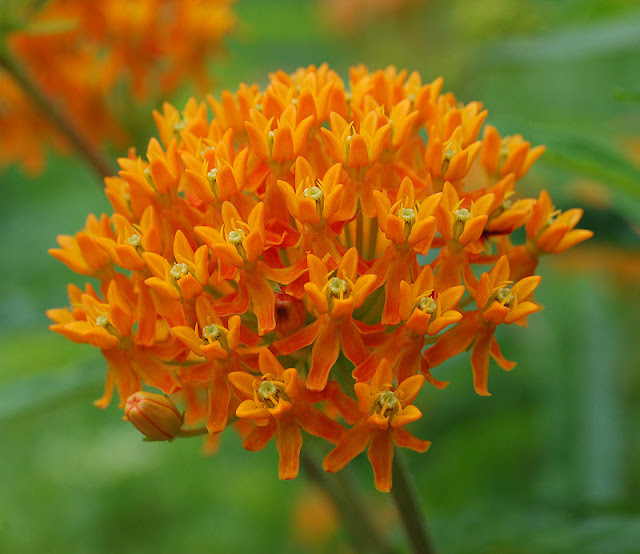About Butterfly Weed
This is the most famous member of the milkweed family because of its' nectar and pollen-rich flowers that attract hummingbirds, butterflies, and bees. It grows in well-drained gritty soil to a height of 24 to 36 inches and is 12 to 24 inches wide. This plant is native to North America and produces clusters of orange or yellow flowers adorned by lance-shaped leaves. This plant likes full sun and usually blooms from early summer to early fall.Butterfly weed grows wild in a variety of environments including open woods, meadows, prairies, dry fields and even along roadsides. It spreads by way of seeds released from pods in early autumn. Butterfly weed is the only member of the milkweed family that does not have the white milky sap that is commonly associated with other species of milkweed.
Ceremonial & Medicinal Uses of Butterfly Weed
The Navajo Ramah used this plant as a ceremonial chant lotion and the Omaha used this in a ceremony connected with the obtaining and distribution of the root of this plant which was greatly prized.The Cherokee would boil the seeds and use them as an antidiarrheal and the root was used as a gentle laxative. One of the most common uses of this plant by the Cherokee, Delaware, Oklahoma, was to make an infusion from the root that was given to women that just gave birth. The Delaware, Oklahoma, Ponca, and Mohegan used the dried root of this plant to treat pleurisy. The Iroquois would apply a poultice of smashed roots to legs for running strength and the Menominee used a poultice of this root for bruises, swelling, and lameness. The Rappahannock used a poultice of bruised leaves to treat snakebite.
Did you know...
Monarch caterpillars feed exclusively on the leaves of butterfly weed and is the only host plant for this iconic butterfly species. Without it, monarch butterflies cannot complete their life cycle and their population declines.The Butterfly weed is from the Asclepias family, named after the famous Greek God of Medicine.
The plant has a long history in herbal medicine and was also known as the Pleurisy Root.
Butterfly Weed appears in the September 1932 Medicinal Plant Map of the United States of America published by the National Wholesale Druggists Association.




No comments:
Post a Comment